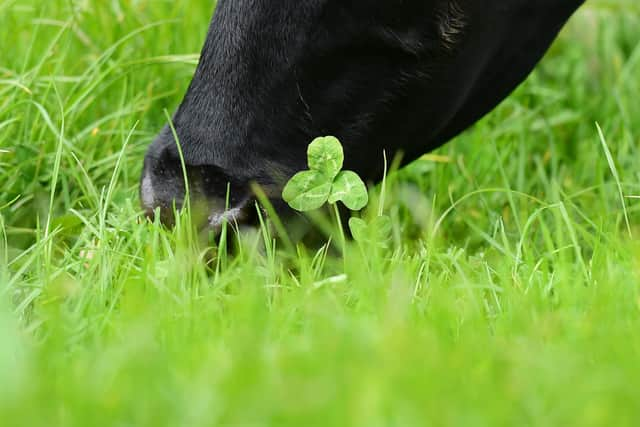St Patrick the botanist – but did Ireland’s patron saint get the right plant?
and live on Freeview channel 276
But was the shamrock – convenient for his purposes as it may have been – simply a metaphor for other native Irish plant species?
More than 1,500 years after St Patrick used the three leaves of the shamrock to explain the holy trinity, research shows that other closely related native Irish plant species – red and white clover – are playing an important role in helping Ireland to combat climate change by reducing emissions.
Advertisement
Advertisement
Scientists at VistaMilk, the Science Foundation Ireland agri-food research centre, say their studies show that having clover planted in fields where cows graze can reduce the need for dairy farmers to use fertiliser nitrogen by up to 40pc.


Now VistaMilk scientists are looking at other native Irish plant species alongside clover in “multi-species swards” – pastures that contain so much more than just traditional grass. Chicory and plantain are plant species native to Ireland which also, because of their long roots, help the soil retain moisture and nutrients like nitrogen which in turn reduces run-off into rivers and lakes.
In addition, studies show that some breeds of cows grazing on multispecies swards produce a better quality of milk than they do on grass, and there’s also an increase – of as much as 26% over a year – in important Omega 3 fatty acids, which help the cells in your body function as they should.
And proving that there is such a thing as a free lunch – at least for cows, anyway – there are no non-beneficial effects in terms of milk produced and the cows themselves love the clover – indicating that St Patrick was a dairy aficionado as well.
Advertisement
Advertisement
Renata Kostovska, the PhD student at VistaMilk in Fermoy, Co Cork, who is undertaking research into multi-species swards, believes that they will be key to ensuring an environmentally sustainable future for Irish dairy.
Renata said: “What we’re seeing in our studies shows that the mix of indigenous Irish plants in our multi-species pastures – symbolised by St Patrick’s shamrock – can help us combat climate change and improve our environmental performance.
“In addition, we will see even better-quality Irish milk – already some of the best in the world thanks to our pasture-based system – and a potential increase in the elements in milk which are or have the potential to be beneficial to human health.
“In the future, we might even see milk in our shops that is categorised as coming from multi-species swards, and consumers will know that, by buying it, they’re buying something that’s making an environmental difference.
“But, clearly, St Patrick could have told them that.”